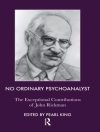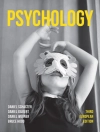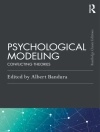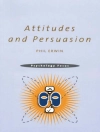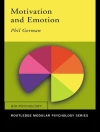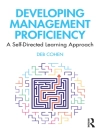With contributions from leading European and American
psychoanalysts, this innovative text systematically investigates
and analyses the relationship between clinical practice and
psychoanalytic theories.
It examines clinical practice experience in detail and links it
with the knowledge gained from official theory. To make this type
of analysis of clinical material possible, the team of authors have
devised a grid called The Map. This new instrument details
the implicit theories of the analyst at work and can be used in
everyday clinical work and supervisions. These analyses highlight
the divergences and convergences with theory, but also reveal
outlines for new models.
Psychoanalysis: From Practice to Theory makes a
significant contribution to the debate about the most important
problems that psychoanalysis presents. It will be of great value to
psychoanalysts, psychotherapists, and students of
psychoanalysis.
Contributors: Jorge L. Ahumada, Werner Bohleber, Jorge
Canestri, Paul Denis, Peter Fonagy, William I. Grossman, Gail S.
Reed, David Tuckett, Samuel Zysman
Whurr Series in Psychoanalysis Edited by Peter Fonagy and
Mary Target
Mục lục
About the editor.
Contributors.
Series foreword.
Acknowledgements.
Introduction (Jorge Canestri).
1 Implicit understanding of clinical material beyond theory
(Jorge Canestri).
2 The map of private (implicit, preconscious) theories in
clinical practice (Jorge Canestri, Werner Bohleber, Paul Denis
and Peter Fonagy).
3 Miss R (Peter Fonagy).
4 Discussion of public and implicit theories in Peter
Fonagy’s case presentation (Werner Bohleber).
5 The failure of practice to inform theory and the role of
implicit theory in bridging the transmission gap (Peter
Fonagy).
6 Some perspectives on relationships of theory and technique
(William I. Grossman).
7 Theory as transition: spatial metaphors of the mind and the
analytic space (Gail S. Reed).
8 The analytic mind at work: counterinductive knowledge and the
blunders of so-called ‘theory of science’ (Jorge
L.Ahumada).
9 Infantile sexual theories and cognitive development:
psychoanalysis and theoretical production (Samuel
Zysman).
10 The search to define and describe how psychoanalysts work:
preliminary report on the project of the EPF Working Party on
Comparative Clinical Methods (David Tuckett).
Bibliography.
Index.
Giới thiệu về tác giả
Jorge Canestri: MD, psychiatrist, psychoanalyst. Specialized in linguistics and epistemology. Training and supervising analyst for the Italian Psychoanalytical Association (AIPsi) and for the Argentine Psychoanalytic Association. Director of the Institute of Psychoanalysis of the Italian Psychoanalytical Association (1992-98). Full member of the International Psychoanalytic Association. Chair of the Ethics Committee (IPA), Chair of the Working Party on Theoretical Issues of the EPF, Chair of the 42nd Congress of the International Psychoanalytic Association (IPA), Nice, 2001. Member of the Conceptual and Empirical Research Committee (IPA). Professor of Psychology of Mental Health at the Roma 3 University. Editor of the Educational Section of the International Journal of Psycho-Analysis. Member of the Editorial Board of the International Journal of Psycho-Analysis. Correspondent of Psicoanálisis and of Revista de Psicoanálisis. Member of the Editorial Board of Aperturas Psicoanalíticas. Author of numerous psychoanalytical papers in books and reviews and co-author of The Babel of the Unconscious: Mother Tongue and Foreign Languages in the Psychoanalytic Dimension. Editor (with Marianne Leuzinger-Bohleber and Anna Ursula Dreher) of Pluralism and Unity? Methods of Research in Psychoanalysis. Director of the webpage: Psychoanalysis and logical mathematical thought. Mary S. Sigourney Award recipient, 2004. IPA Global Representative for Europe.


